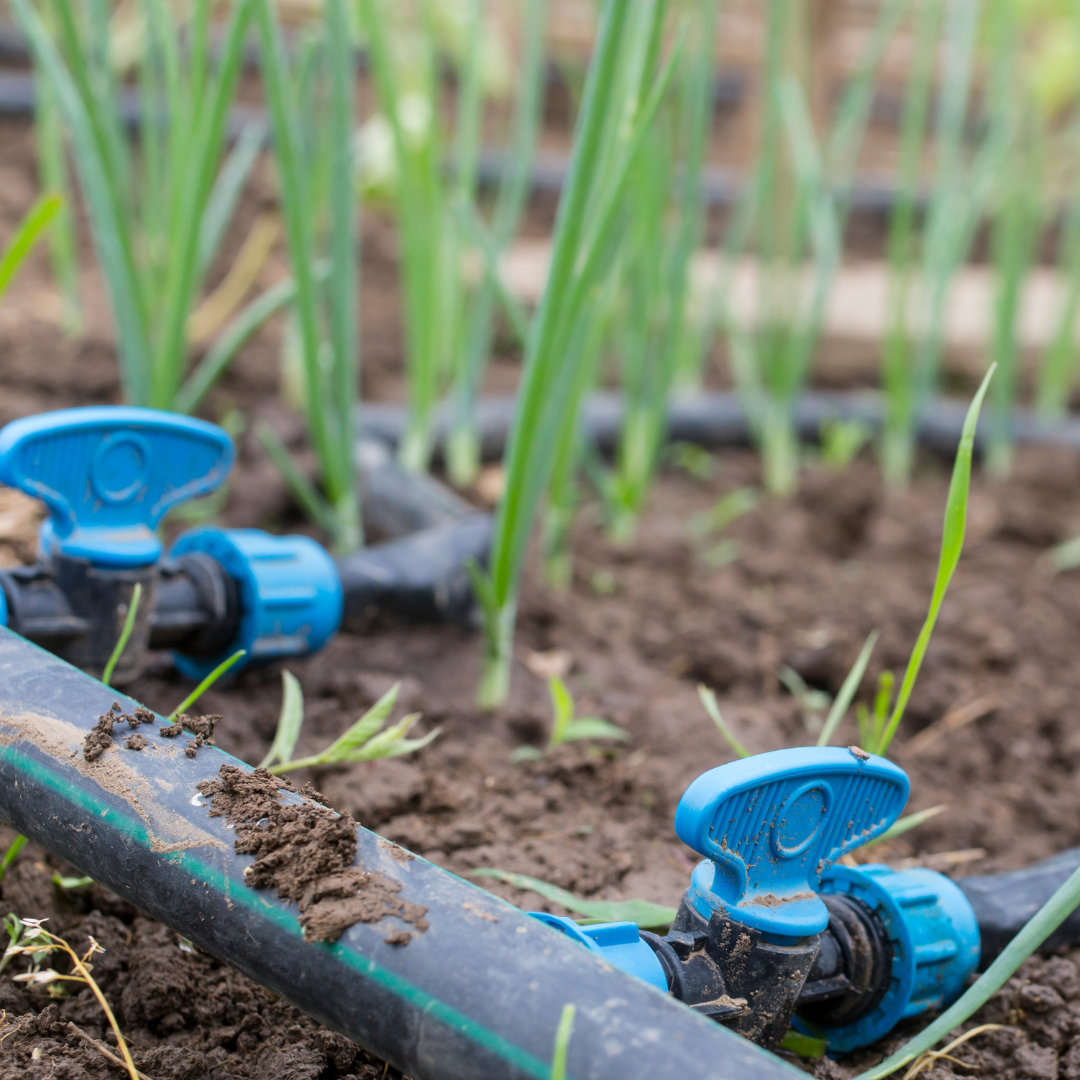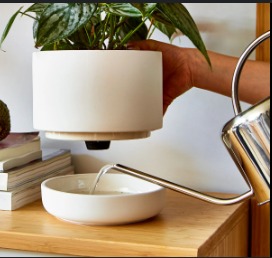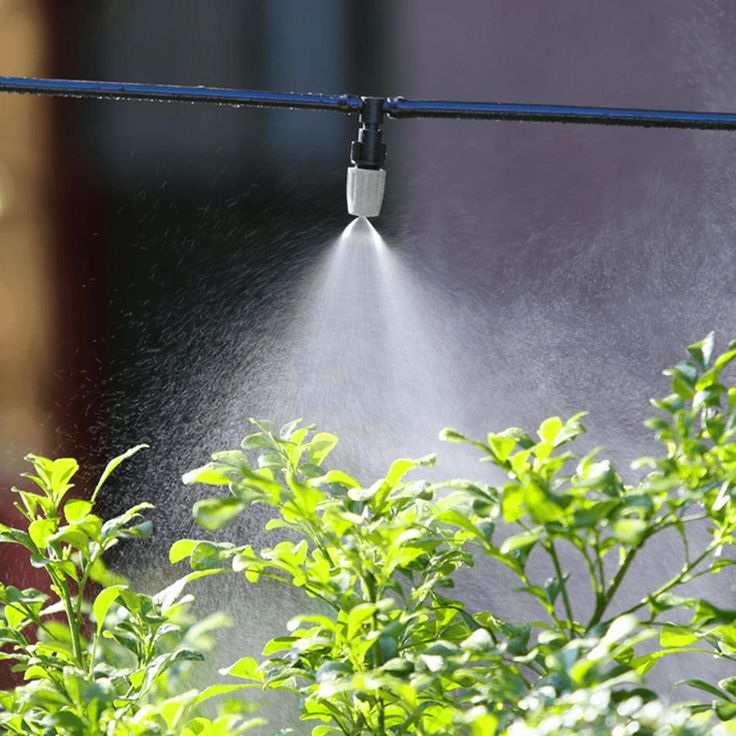Vertical gardens are a great way to add greenery to small spaces. However, keeping these gardens well-watered can be a challenge. Choosing the right watering systems is key to healthy plants.
In this article, we’ll explore the best watering systems for vertical gardens, including drip irrigation, self-watering planters, Hydroponic system, and misting systems.

Each method has its own benefits and is suitable for different types of plants and garden setups.
We’ll also provide easy steps to install each system, ensuring your vertical garden stays lush and vibrant. Let’s dive in and find the perfect solution for your garden!
Drip Irrigation Systems
Drip irrigation systems are a great choice for vertical gardens. They deliver water directly to the plant roots, ensuring efficient water use and healthier plants.
This system conserves water by minimizing evaporation and runoff.

It is easy to install: connect a main line to your water source, add drip emitters where your plants are, and secure the lines in place. Drip irrigation provides consistent moisture, reducing plant stress and promoting strong growth.
This method is perfect for maintaining a thriving vertical garden with minimal effort.
Table of Contents
ToggleBenefits of Drip Irrigation
- Water Efficiency: Drip irrigation conserves water by delivering it directly to the roots.
- Healthier Plants: Consistent watering reduces plant stress and promotes healthier growth.
- Ease of Installation: Drip systems are relatively easy to install and maintain.
How to Install Drip Irrigation
- Plan Your Layout: Map out your vertical garden and determine where to place the drip lines.
- Install the Main Line: Connect the main line to your water source and run it along the top of your garden.
- Attach Drip Emitters: Insert drip emitters along the main line at intervals that correspond to your plant placements.
- Secure the Lines: Use clips or stakes to secure the lines in place.
- Test the System: Turn on the water to check for leaks and ensure even distribution.
Self-watering planters
Self-watering planters are a convenient solution for vertical gardens. These planters have a built-in water reservoir at the bottom.
The reservoir automatically provides water to the plants through capillary action, ensuring they get consistent moisture.

To use them, simply fill the reservoir with water and plant your garden in the soil above it. Check the water level regularly and refill when needed.
Self-watering planters reduce the need for frequent watering, save water, and promote healthy plant growth, making them an easy and efficient way to keep your vertical garden thriving.
Hydroponic Systems
Hydroponics involves growing plants without soil, using nutrient-rich water solutions. In vertical gardens, hydroponic systems can be set up using techniques like:
- Nutrient Film Technique (NFT): A shallow stream of nutrient-rich water flows over plant roots, providing constant nutrition.
- Drip Systems: The nutrient solution is dripped onto plant roots, ensuring they receive adequate water and nutrients.

Benefits of Hydroponic Systems
- Increased Growth Rates: Plants grow faster due to direct access to nutrients.
- Water Efficiency: Hydroponic systems use less water than traditional soil-based gardening.
- Space Savings: Ideal for compact vertical gardens, maximizing growing area.
Setup Tips
- Choose a System: Select the hydroponic method that best suits your plants and space.
- Install Lighting: Ensure plants receive adequate light for photosynthesis.
- Monitor pH and Nutrients: Regularly check and adjust nutrient levels for optimal plant health.
Hydroponic systems offer a versatile and efficient way to grow a wide variety of plants in vertical gardens, enhancing productivity and plant health.
Misting Systems
Misting systems are perfect for vertical gardens with delicate plants that require high humidity.

These systems provide a fine mist of water, keeping the foliage moist and cool.
Advantages of Misting Systems
- Humidity Control: Misting increases humidity, which is beneficial for certain plants.
- Cooling Effect: The fine mist helps to cool down the plants and surrounding area.
- Flexible Installation: Misting systems can be tailored to fit any vertical garden layout.
Installing Misting Systems
- Plan Your Setup: Determine the best locations for misting nozzles based on your garden layout.
- Install Main Line: Attach the main water line to your water source and run it along the top of your garden.
- Attach Misting Nozzles: Secure misting nozzles along the main line, spacing them evenly.
- Secure the Lines: Use clips or stakes to hold the lines and nozzles in place.
- Test the System: Turn on the water to ensure the mist is distributed evenly.
Conclusion
Choosing the right watering system for your vertical garden is crucial for maintaining healthy and thriving plants.
Drip irrigation, soaker hoses, wicking systems, and misting systems each offer unique benefits and are suitable for different types of vertical gardens.
By following the installation steps provided, you can ensure your vertical garden receives the optimal amount of water, promoting lush and vibrant growth.

Pingback: The Health Benefits of Growing Your Vertical Garden!
Pingback: Importance of Soil Health in Sustainable Agriculture
Pingback: Hacks for Improving Plant Health in Hydroponics Gardens!
Pingback: How to Grow Medicinal Plants in a Vertical Garden?
Pingback: Indoor Vertical Gardening Hacks You Need to Know!
Pingback: The Eco-Friendly Benefits of Vertical Gardening!